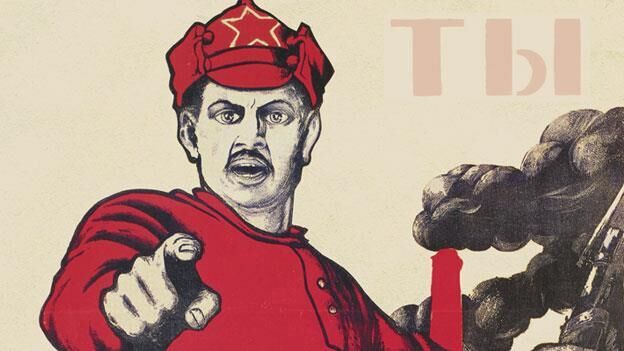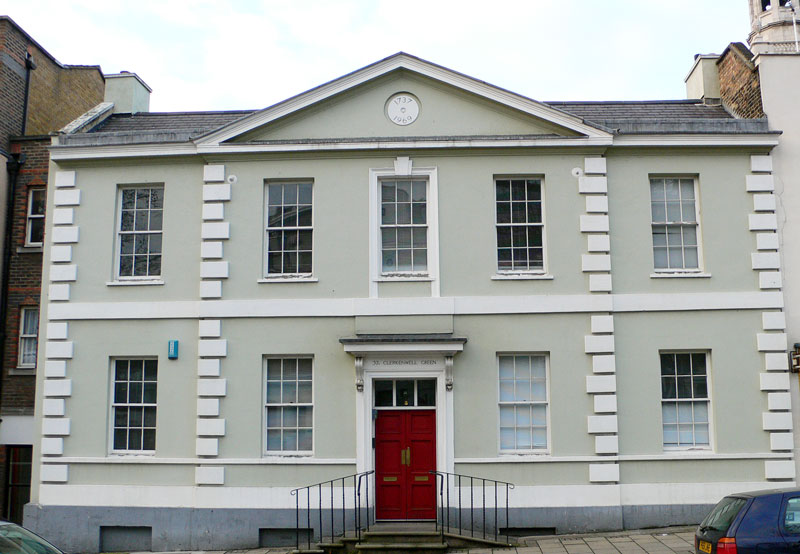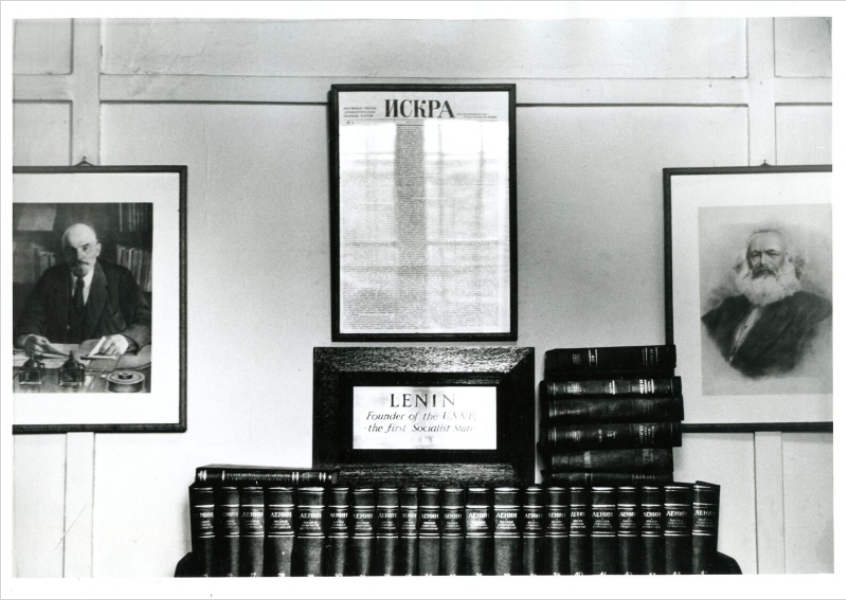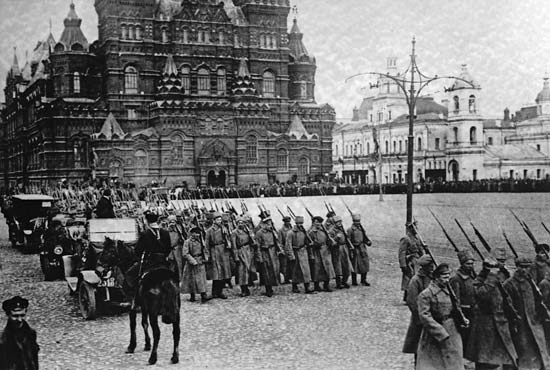
There is a corner of Clerkenwell where the radical history of London is still very much alive today. The Marx Memorial Library and Worker’s School on Clerkenwell Green opened its doors in 1933, fifty years after Marx died. To commemorate his life, and in response to the rise of fascism in Europe, a library dedicated to the study of Marxist thought and industrial struggles was a particularly fitting memorial given the burning of Marx’s books by Nazis that same year.
For over eighty years, the Library has been at the heart of the British Labour movement. Jeremy Corbyn, who lives in nearby Islington, is a regular visitor. The Library (membership £20 annually) now houses over 40,000 books and pamphlets on Marxism, the history of socialism and working class movements – their archive on the Spanish Civil War is the most comprehensive in Britain.
They also hold a full run of the Daily Worker and Morning Star, from the first issue published in 1930, and their poster collection, including ones from the Russian Revolution of 1917, is impressive. More than just a library though, it’s an active community hub: they host lectures, school visits, trade union gatherings, book launches and welcome researchers to their reading rooms.

The building’s facade has been restored to its eighteenth-century state; inside, it feels as though time has stood still, the walls adorned with socialist paintings, trade union posters and banners from labour movements around the world. An impressive mural by Viscount Hastings, a student of the Mexican artist Diego Rivera, greets you in the reading room. A celebration of the “worker of the future clearing away the chaos of capitalism”, it shows a Welsh miner tearing down the Houses of Parliament while Lenin looks on. The original 1938 banner from the International Brigade’s Battalion in the Spanish Civil War hangs downstairs.
LOCAL ADVERTISING
The site at 37a Clerkenwell Green also has a radical history. It began life as a Welsh Charity School in 1738, until the school moved to Gray’s Inn Road nearby, and later housed the radical London Patriotic Society, founded “as a place for political lectures and discussions” by the philosopher John Stuart Mill in “a neighbourhood well known to democracy”. Twentieth Century Press, London’s first socialist printing press, took up residence in the building, subsidised by William Morris, poet, activist and pioneer of the arts and crafts movement. A banner made by his hand and reading “Hammersmith Socialist League” hangs in the Marx Memorial Library today.
Among other things, the publisher produced some of the earliest English editions of Marx and Engels’s work. It was here that Lenin worked while in exile in London. From 1902 to 1903, he shared the offices of Twentieth Century Press and edited the Russian journal ISKRA (the Spark) – the room where he worked has been preserved and is open to the public.
As this year marks the centenary of the 1917 Revolution, it’s worth remembering that some of its thinking can be traced back to this quiet little corner of London. At the turn of the nineteenth century, the city was home to some of Europe’s most prominent socialist revolutionaries: Karl Marx lived on Dean Street in Soho and later in Kentish Town, near where he is now buried, and spent time writing at the British Library. Lenin lived on Percy Circus, near King’s Cross, while working at 37a Clerkenwell Green.

Indeed Clerkenwell has been the heart of radical thought in London for a very long time. It welcomed religious free-thinkers from the Lollards to the persecuted Catholics, who sought refuge here in the sixteenth century, followed the Quakers and Freemasons – the latter still reside at Sessions House.
In the eighteenth century, with the rise of printing presses and a thriving artisanal community, it gained a reputation as a hub of free speech and creative expression.The square is a natural public gathering place and its taverns and coffeehouses, most famously at Lunts Coffee House, were a hotbed of political discussion and entrepreneurial spirit from the eighteenth century onwards.
The area was closely linked to reform movements: protests against the Corn Laws, regular rallies and Chartist meetings took place in the Green in the 1800s. Later, Eleanor Marx spoke at a gathering for the unemployed, and William Morris led demonstrations of 50,000 from Clerkenwell Green to Trafalgar Square.
In the face of rising property prices, Clerkenwell has lost most of its core of radical residents though the Guardian and the Observer had offices in the area until 2008, continuing the legacy of left-leaning press. That said, London’s annual May Day Parade still departs from Clerkenwell Green every year and the Marx Memorial Library stands strong as a bastion of the area’s radical history.
There are guided tours of the historic Marx house on Tuesdays and Thursdays. As well as Lenin’s office and the reading rooms, you can explore the Library’s rich collections and take a peek in the vaults dating back to the fifteenth century. Next year marks the 200th anniversary of Marx’s birth but it seems this thinker’s relevance shows no signs of abating.
4 more to visit

Russian Revolution: Hope, Tragedy, Myths
This excellent exhibition takes a fresh look at the 1917 Revolution a hundred years on. Rarely seen items from the Library’s collection are on display, including propaganda from both sides of the conflict. The BL is also running a series of lectures and other events alongside the exhibition throughout June and July so check out their website for more information. Until 29th August, British Library
The Russian Revolution
Centenary Lecture Series The Institute for Historical Research, a great place for free historical lectures in the heart of Bloomsbury, is curating a series of talks on the Revolution to celebrate its centenary. Leading scholars on the events of 1917 come and share their expertise. The next lecture by Andy Willimott (University of Reading) is on Living the Revolution: Inventing a Socialist Lifestyle Institute for Historical Research, Senate House, Malet St WC1
Pushkin House
The oldest independent Russian cultural centre in the UK, Pushkin House in Bloomsbury Square certainly merits a visit. Their rich events programme includes a lecture on the history punishment in Russia, under the Tsars and the Soviet regime, and a performance of piano music by Rachmaninov, composed during the Revolution of 1917, on the 2nd July. 5a Bloomsbury Square WC1
Bookmarks, the Socialist Bookshop
To delve deeper into the thinking behind the Revolution of 1917, this is the place to go. Pick up a copy of Marx and Engels’s Communist Manifesto or Lenin’s State and Revolution. Or check out their website, where they’ve put together reading lists on the Revolution and Marxist thought more generally. 1 Bloomsbury Street WC1


